
Consumer Insights
Uncover trends and behaviors shaping consumer choices today
Procurement Insights
Optimize your sourcing strategy with key market data
Industry Stats
Stay ahead with the latest trends and market analysis.
The Expert Market Research report, titled “Propyne Manufacturing Plant Project Report 2025 Edition: Industry Trends, Capital Investment, Price Trends, Manufacturing Process, Raw Materials Requirement, Plant Setup, Operating Cost, and Revenue Statistics” includes various aspects that are critical for establishing a propyne plant. These include infrastructure requirements, transportation requirements, utility specifications, and financial and economic analysis, among others.






Propyne serves as a vital intermediate in the production of propylene, a key feedstock for the petrochemical industry. The increasing demand for propylene, particularly due to its role in producing polypropylene, has been significantly influenced by the growth of sectors such as packaging, automotive, and textiles. Additionally, growing production capacity of propane dehydrogenation (PDH) plants across Asian and other regions is facilitating growth of the market. In 2024, China's propane dehydrogenation (PDH) plants reached a combined production capacity of 19.87 million tons per year (t/y), with expectations to exceed 20 million t/y as new plants are being set up. Noteworthy projects include Zhenhua Petrochemical's 750,000 t/y facility and Qingdao Jinneng Phase II's 900,000 t/y plant.
Operational efficiency has also seen considerable improvement; by mid-May 2024, the average operating rate of PDH plants surged to 76.21%, a significant recovery from earlier rates of 49-65%. This increase is driven by reduced propane feedstock prices, which have dropped from Yuan 5,100-5,200/t to Yuan 4,800-4,900/t. Furthermore, the profitability of PDH operations has improved, with estimated losses decreasing from over Yuan 500/t at the beginning of the year to less than Yuan 100/t by May. This positive shift is attributed to lower feedstock costs and rising domestic propylene prices, currently around Yuan 6,800-6,900/t. As these facilities become more economically viable, they contribute to a higher demand for propyne as a feedstock.
Other elements to consider while establishing a propyne plant include raw material sourcing, workforce planning, and packaging. The production of propyne primarily relies on propene, propane, and naphtha. Propane is commonly used in steam cracking to produce propylene, which can then be converted into propyne. In some regions, especially in the Middle East and Asia, naphtha serves as a principal feedstock for propylene production, further contributing to the availability of propyne in the market.
Moreover, to help stakeholders determine the economics of a propyne plant, project funding, capital investments, and operating expenses are analyzed. Projections for income and expenditure, along with a detailed breakdown of fixed and variable costs, direct and indirect expenses, and profit and loss analysis, enable stakeholders to comprehend the financial health and sustainability of a business. These projections serve as a strategic tool for evaluating future profitability, assessing cash flow needs, and identifying potential financial risks.
Propyne, or methylacetylene, is an alkyne hydrocarbon with the formula C3H4. It is a colourless gas with a sweet odour, primarily used as a speciality fuel and chemical intermediate. Propyne was first produced in the early 20th century and has since found applications in welding and as a precursor for various organic compounds. Historically, propyne was identified in the 1920s and has been used in the production of other chemicals and as a fuel source for torches since then.
Propyne exhibits several notable physical and chemical properties. It has a melting point of -104°C and a boiling point of -23.1°C. Propyne is denser than air and insoluble in water but soluble in organic solvents like ethanol and chloroform. It is highly flammable with explosive limits of 2.4% to 11.7% in air. Propyne can react exothermically with oxidising agents and is known to form peroxides, which can lead to explosions. Its molecular weight is 40.06 g/mol, and it has a vapor pressure of 204.6 mm Hg at -49.5°C.
The manufacturing of propyne typically involves the thermal or catalytic pyrolysis of propene. The process begins with feedstock preparation, where propene is sourced from petroleum refining or cracking processes. This is followed by pyrolysis, where propene undergoes high-temperature breakdown into propyne and other byproducts. The propyne is then separated from other hydrocarbons through distillation, purified to remove impurities, and stored in pressurised containers for distribution.

Read more about this report - REQUEST FREE SAMPLE COPY IN PDF
The production of propyne typically involves the following methods:
Method 1: Dehydrogenation of Propane
One of the primary industrial methods for producing propyne is through the dehydrogenation of propane. In this process, propane (C3H8) is heated in the presence of a catalyst to remove hydrogen atoms, producing propyne (C3H4) and hydrogen gas (H2).
The chemical reaction for this process is as follows: C3H8 → C3H4 + 2 H2
This reaction requires high temperatures and is typically catalysed by metal-based catalysts such as chromium or molybdenum.
Method 2: Cracking of Hydrocarbons
Another method to produce propyne is by the cracking of hydrocarbons. In this process, heavier hydrocarbons such as naphtha or ethane are thermally cracked, resulting in a mixture of hydrocarbons, including propyne. The cracking process breaks down larger hydrocarbon molecules into smaller ones, with propyne being one of the products.
Step 3: Separation and Purification
Once propyne is produced through dehydrogenation or cracking, it is separated from other byproducts such as hydrogen, ethylene, and methane. This is typically done through fractional distillation, followed by purification processes to achieve high purity propyne suitable for industrial use.
Step 4: Storage and Packaging
Propyne is then stored under pressure in gas cylinders or liquid form under controlled temperature.
Propyne is used as a speciality fuel in welding torches and as a chemical intermediate in the synthesis of pharmaceuticals and agrochemicals. The increasing demand for clean-burning fuels in industrial applications and the growth of the chemical manufacturing sector are significant drivers of the propyne market growth. For example, propyne is used in the production of propene, a key feedstock for the petrochemical industry. Additionally, the versatility of propyne in various chemical processes, such as its use as a fuel in the production of acetylene and as a feedstock for the manufacture of other chemicals, ensures its continued relevance in the market.
A detailed overview of production cost analysis that evaluates the manufacturing process of propyne is crucial for stakeholders considering entry into this sector. Furthermore, stakeholders can make informed decisions based on the latest economic data, technological innovations, production process, requirements of raw materials, utility and operating costs, capital investments by major players, pricing strategies, and profit margins. For instance, in 2023, U.S. propane exports surged due to strong international demand, averaging 1.7 million barrels per day (b/d) in March, marking the highest level since 1973. By December 2023, this figure rose to an average of 1.9 million b/d, reflecting a robust response to global market trends and the highest propane price spread between the U.S. Gulf Coast and East Asia in a decade. From January through September 2023, the U.S. exported over USD 15 billion worth of propane, with Japan being the largest importer, receiving nearly USD 5.31 billion worth annually.
Notably, U.S. propane exports to China increased by 49% in 2023 compared to the previous year, driven by rising demand for propylene as a petrochemical feedstock. This growth was complemented by a 25% increase in annual U.S. propane exports to Asia overall. The increased availability of propyne in international markets, driven by rising propane exports, is likely to benefit propyne manufacturers by expanding their market reach and production opportunities. However, the ongoing oversupply in the polyolefins market may pressure profit margins, necessitating strategic adjustments for producers to remain competitive.
Below are the sections that further detail the comprehensive scope of the prefeasibility report for a propyne production plant:
Market Dynamics and Trends: Factors such as stricter environmental regulations are significantly affecting market conditions in the propyne sector. Such regulations are driving industries to seek cleaner alternatives to traditional fossil fuels, with propyne emerging as a promising option due to its lower carbon footprint compared to heavier hydrocarbons. In 2024, global carbon dioxide (COâ‚‚) emissions from fossil fuels reached a record high of 37.4 billion tonnes, reflecting a 0.8% increase from the previous year. This rise in emissions underscores the need to producer more clean fuels. In 2023, production of biomass-based diesel such as biodiesel, renewable diesel, and sustainable aviation fuel reached 4 billion gallons in USA.
For 2024, the Environmental Protection Agency (EPA) has projected a 530-million-gallon increase in biomass-based diesel volumes. Agricultural industries are using propyne as a fuel source for drying crops. As regulatory pressures intensify and the need for cleaner energy sources becomes more critical, propyne's role as an alternative fuel is likely to expand further. Understanding these factors helps businesses align their production plans with demands and trends in the propyne market.
Profiling of Key Industry Players: Leading companies in the propyne market include Exxon Mobil Corporation, Sinopec, Shell Plc, Chevron Corporation, and PetroChina Company Limited. These firms are significant players in the propane and petrochemical industries, leveraging their extensive resources and global reach to influence propyne production and distribution.
In recent developments, researchers in East China University of Science and Technology have achieved a highly selective pathway for propyne semihydrogenation using a CoSb intermetallic catalyst, which demonstrates an impressive 97% selectivity for propylene. This development could significantly impact propyne manufacturers as it enhances the efficiency of propyne conversion processes and potentially reducing waste from undesired byproducts. As leading manufacturers adopt this technology, they may experience lower production costs and improved scalability. Consequently, this innovation could strengthen the competitive position of propyne in the market.
Economic Analysis: Capital expenditure (CAPEX) analysis provides stakeholders the knowledge about required investments in advanced technologies, efficient machinery, and necessary infrastructure. Investing in high-capacity mixing equipment, such as a continuous mixer or high-shear mixer, can improve production efficiency by 20-30%. Investing in energy-efficient systems, such as combined heat and power (CHP) systems could reduce energy consumption by up to 30%, as these systems use waste heat from production processes to generate electricity and provide heating.
Fluctuations in propyne prices are influenced by several key factors, particularly the costs of propane and crude oil. During the winter months of 2023, a surge in demand for propane for heating purposes led to a significant increase in propane prices, which in turn affected propyne production costs. Additionally, geopolitical tensions, such as the conflict in Eastern Europe, have caused disruptions in crude oil supply chains, leading to higher crude oil prices that also impact the cost of raw materials used in propyne production. Moreover, in mid-2024, a reduction in U.S. propane exports due to maintenance shutdowns at major processing facilities resulted in tighter supply and increased prices for both propane and propyne. These market dynamics can lead to price volatility in the propyne market.
Establishing a propyne manufacturing facility requires a comprehensive financial investment that encompasses various elements critical to the project's success. The following sections detail these components:
Projected profit margins and effective product pricing strategies improve overall profitability. Manufacturers might target a profit margin of around 20-30%, achieved through strategic pricing based on raw material costs and prevailing market demand. Effective pricing strategies should consider fluctuations in raw material prices and competitive positioning within the market.
This prefeasibility report aims to equip potential investors and existing manufacturers with crucial insights to make informed decisions in the propyne industry.
*While we strive to always give you current and accurate information, the numbers depicted on the website are indicative and may differ from the actual numbers in the main report. At Expert Market Research, we aim to bring you the latest insights and trends in the market. Using our analyses and forecasts, stakeholders can understand the market dynamics, navigate challenges, and capitalize on opportunities to make data-driven strategic decisions.*
Get in touch with us for a customized solution tailored to your unique requirements and save upto 35%!
Basic Plan
USD 2,699
USD 2,429
Get Startedtax inclusive*
Raw Material and Product Specification, Raw material consumption, Process flow diagram
Machinery Cost, Working Capital
Utilities consumption, Operating cost, Overheads, Financing Charges, GSA , Packaging
Premium Plan
USD 3,699
USD 3,329
Get Startedtax inclusive*
Key Processing Information, Capital Investment Analysis, Conversion Cost Analysis
Raw material consumption and prices, Utilities consumption breakdown, By-Product Credit, Labour Charges Breakdown
Land and Site Cost, Equipment Cost, Auxiliary Equipment Cost, Contingency, Engineering and Consulting Charges
Enterprise Plan
USD 4,799
USD 4,079
Get Startedtax inclusive*
Key Processing Information, Capital Investment Analysis, Conversion Cost Analysis, Variable Cost Breakdown, Investing Cost Breakdown,
Breakdown of machinery cost by equipment, Auxiliary Equipment Cost, Piping, Electrical, Instrumentation
Cost of Construction, Plant Building, Site Development Charges
Land Cost, Development Charges
Dynamic Spreadsheet (Unlocked)
*Please note that the prices mentioned below are starting prices for each bundle type. Kindly contact our team for further details.*

Basic Plan
USD 2,699
USD 2,429
Key Processing Information
Raw Material and Product Specification, Raw Material Consumption, Process Flow Diagram
Capital Investment Analysis
Machinery Cost, Working Capital
Conversion Cost Analysis
Utilities Consumption, Operating Cost, Overheads, Financing Charges, GSA , Packaging

Premium Plan
USD 3,699
USD 3,329
All Contents of Basic Report
Key Processing Information, Capital Investment Analysis, Conversion Cost Analysis
Variable Cost Breakdown
Raw Material Consumption and Prices, Utilities Consumption, Breakdown By-Product Credit, Labour Charges Breakdown
Investing Cost Breakdown
Land and Site Cost, Equipment Cost, Auxiliary Equipment Cost, Contingency, Engineering and Consulting Charges

Enterprise Plan
USD 4,799
USD 4,079
Includes all Report Content
Key Processing Information, Capital Investment Analysis, Conversion Cost Analysis, Variable Cost Breakdown, Investing Cost Breakdown,
Equipment Cost Breakdown
Breakdown of Machinery Cost By Equipment, Auxiliary Equipment Cost, Piping, Electrical, Instrumentation
Land and Construction Cost Details
Land Cost, Development Charges, Cost of Construction, Plant Building, Site Development Charges
Dynamic Excel Cost Model
Dynamic Spreadsheet (Unlocked)
*Please note that the prices mentioned below are starting prices for each bundle type. Kindly contact our team for further details.*
Flash Bundle
Number of Reports: 3
20%
tax inclusive*
Small Business Bundle
Number of Reports: 5
25%
tax inclusive*
Growth Bundle
Number of Reports: 8
30%
tax inclusive*
Enterprise Bundle
Number of Reports: 10
35%
tax inclusive*
How To Order
Our step-by-step guide will help you select, purchase, and access your reports swiftly, ensuring you get the information that drives your decisions, right when you need it.

Select License Type
Choose the right license for your needs and access rights.

Click on ‘Buy Now’
Add the report to your cart with one click and proceed to register.

Select Mode of Payment
Choose a payment option for a secure checkout. You will be redirected accordingly.
Track prices with detailed trend reports.
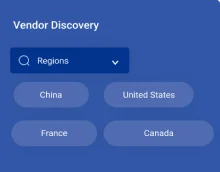
Analyse trade data for supply chain insights.
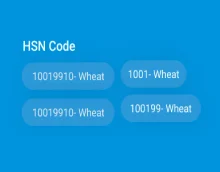
Leverage cost reports for smart savings
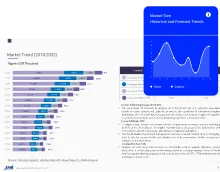
Enhance supply chain with partnerships.
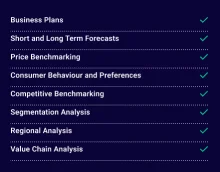
Gain insights to stay ahead and seize opportunities.
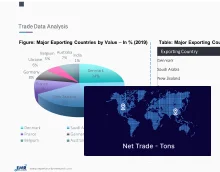
Get insights & trends for a competitive edge.
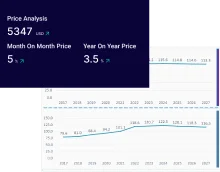
Track prices with detailed trend reports.

Analyse trade data for supply chain insights.

Leverage cost reports for smart savings

Enhance supply chain with partnerships.

Gain insights to stay ahead and seize opportunities.

Get insights & trends for a competitive edge.

Track prices with detailed trend reports.

Analyse trade data for supply chain insights.

Connect For More Information
Our expert team of analysts will offer full support and resolve any queries regarding the report, before and after the purchase.
Our expert team of analysts will offer full support and resolve any queries regarding the report, before and after the purchase.
We employ meticulous research methods, blending advanced analytics and expert insights to deliver accurate, actionable industry intelligence, staying ahead of competitors.
Our skilled analysts offer unparalleled competitive advantage with detailed insights on current and emerging markets, ensuring your strategic edge.
We offer an in-depth yet simplified presentation of industry insights and analysis to meet your specific requirements effectively.



Australia
63 Fiona Drive, Tamworth, NSW
+61-448-061-727
India
C130 Sector 2 Noida, Uttar Pradesh 201301
+91-723-689-1189
Philippines
40th Floor, PBCom Tower, 6795 Ayala Avenue Cor V.A Rufino St. Makati City,1226.
+63-287-899-028, +63-967-048-3306
United Kingdom
6 Gardner Place, Becketts Close, Feltham TW14 0BX, Greater London
+44-753-713-2163
United States
30 North Gould Street, Sheridan, WY 82801
+1-415-325-5166
Vietnam
193/26/4 St.no.6, Ward Binh Hung Hoa, Binh Tan District, Ho Chi Minh City
+84-865-399-124
United States (Head Office)
30 North Gould Street, Sheridan, WY 82801
+1-415-325-5166
Australia
63 Fiona Drive, Tamworth, NSW
+61-448-061-727
India
C130 Sector 2 Noida, Uttar Pradesh 201301
+91-723-689-1189
Philippines
40th Floor, PBCom Tower, 6795 Ayala Avenue Cor V.A Rufino St. Makati City, 1226.
+63-287-899-028, +63-967-048-3306
United Kingdom
6 Gardner Place, Becketts Close, Feltham TW14 0BX, Greater London
+44-753-713-2163
Vietnam
193/26/4 St.no.6, Ward Binh Hung Hoa, Binh Tan District, Ho Chi Minh City
+84-865-399-124
Share